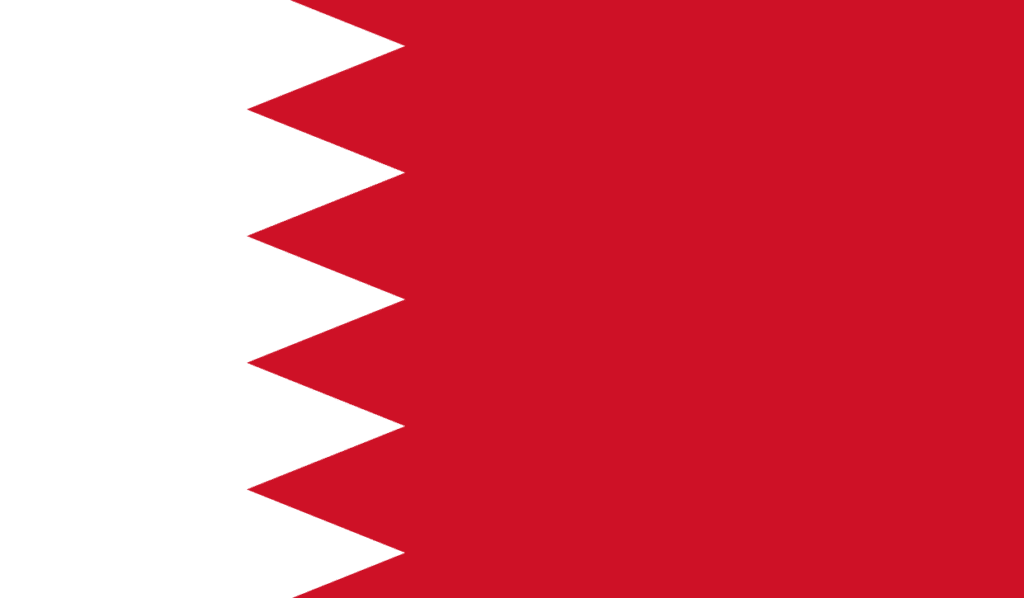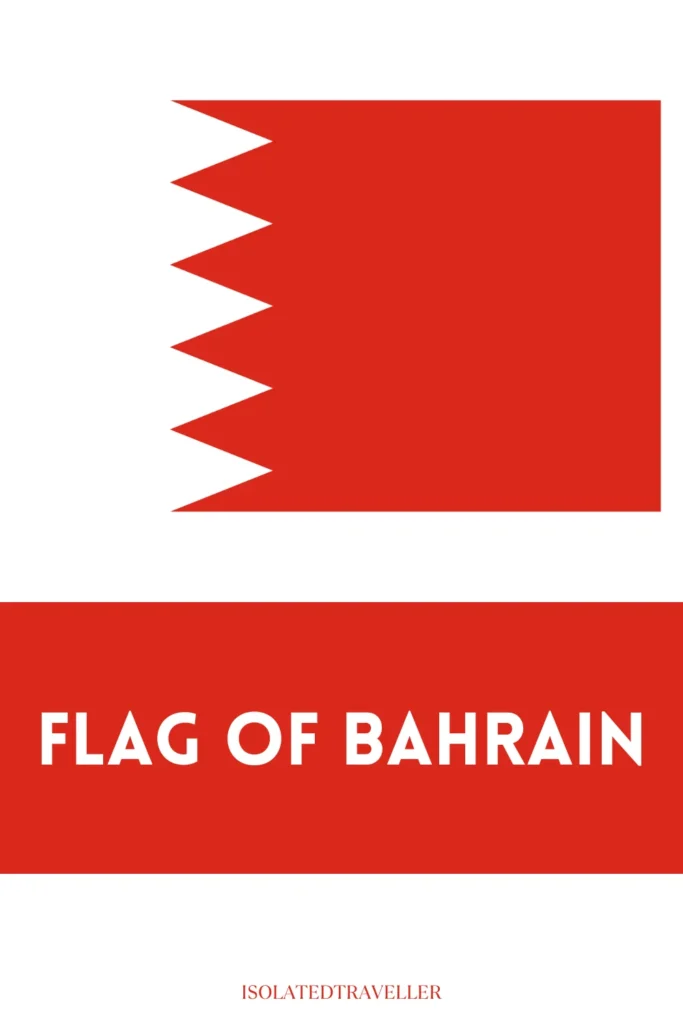Flag of Bahrain
Bahrain was recognized as an independent state on August 15, 1971, and the country’s first flag law became effective on August 19, 1972.
On February 14, 2002, the current flag design was adopted, specifying that the dividing line must be serrated into five white triangles.
This design alteration reinforced the symbolism of the Five Pillars of Islam, which are central to Bahrain’s cultural and religious identity.

Flag Design & Symbolism
The flag of Bahrain consists of a white band on the hoist side, separated from a larger red area on the fly side by five white triangles.
- The white colour represents the nation’s traditions of peace and purity.
- The red symbolizes the ruling family of Bahrain, the Al Khalifa dynasty, as well as the sacrifice of the nation’s people.
- The five triangles represent the Five Pillars of Islam.
Decree by Law
In 2002, the King of Bahrain, Hamad bin Isa Al Khalifa, issued a Decree by Law No. (4) for 2002, which pertained to the flag of Bahrain.
This decree outlined various specifications and regulations regarding the proper use and display of the Bahraini flag. Some key points covered in the decree might include:
- Article I: The Flag of the Kingdom of Bahrain shall take a rectangular shape, and shall be divided into two main sections; the first in red, and the other in white.
- Article II: The King shall have his flag, for which a royal order shall be issued to determine its shape, measures, and places.
- Article III: The Flag of the Kingdom of Bahrain shall be hoisted on the Royal Court, Palaces, governmental buildings, public establishments, embassies, Bahraini bureaus abroad, and Bahraini ships.
- Article IV: Each non-Bahraini ship entering the territorial waters of the Kingdom of Bahrain shall hoist the Flag of the Kingdom, and shall keep the flag hoisted till it departs from the territorial waters of the Kingdom.
- Article V: The Flag shall be hoisted on governmental buildings, and public institutions during public holidays and occasions from sunrise to sunset.
- Article VI: The Flag of the Kingdom of Bahrain shall not be hoisted on vehicles, except on the official protocol vehicles.
- Article VII: The Flag of the Kingdom of Bahrain shall be hoisted at half mast at the state of mourning.
- Article VIII: The Flag of the Kingdom of Bahrain shall not be used for commercial purposes.
- Article IX: In case the Flag is used otherwise, and not as stipulated in the above law, a punishment of one month of imprisonment as a maximum, or a fine not exceeding BD 100, or both shall be inflicted.
Decree by Law No. (4) for 2002 would have served to regulate and protect the use of the Bahraini flag, ensuring its proper representation and honouring its role as a symbol of national identity and pride.

History of Bahrain Flag
Before gaining independence, Bahrain did not have an official flag. Instead, it used various flags under different rulers, including the flag of the Al Khalifa dynasty, which ruled Bahrain for centuries.
Bahrain gained independence from the British on August 15, 1971. Soon after, on August 19, 1972, the country adopted its first official flag through a flag law.
The initial flag featured a horizontal tricolour design with red, white, and black bands, symbolizing the historical links between Bahrain and other Arab nations.
On February 14, 2002, Bahrain introduced the current flag design, which is distinctively different from the previous one.
The new design features a large red area on the fly side and a smaller white band on the hoist side, separated by five white triangles.
The dividing line between the red and white sections is serrated, with each serration forming a triangle.
This design was adopted to symbolize the Five Pillars of Islam, reflecting Bahrain’s identity as an Islamic nation.


